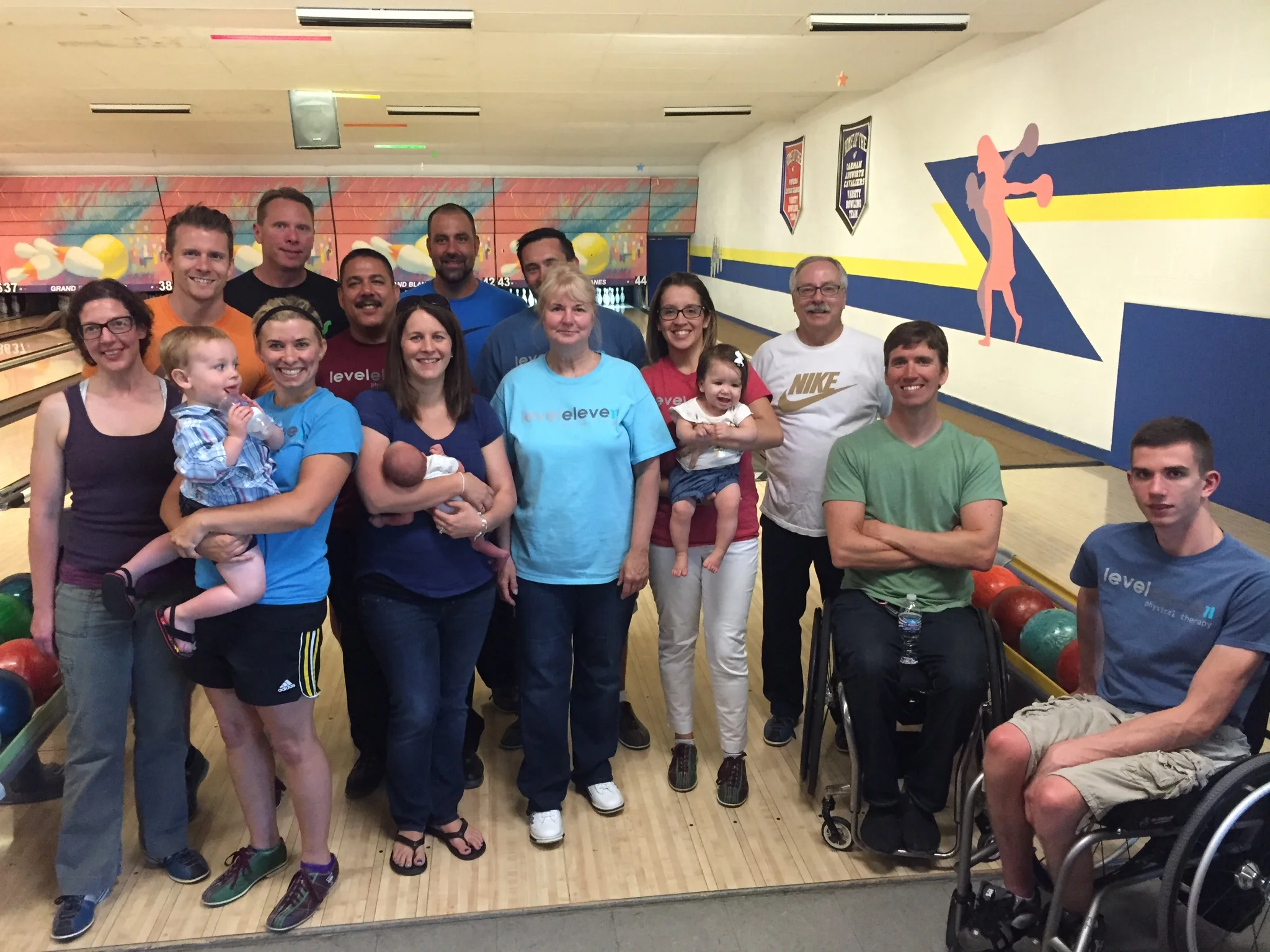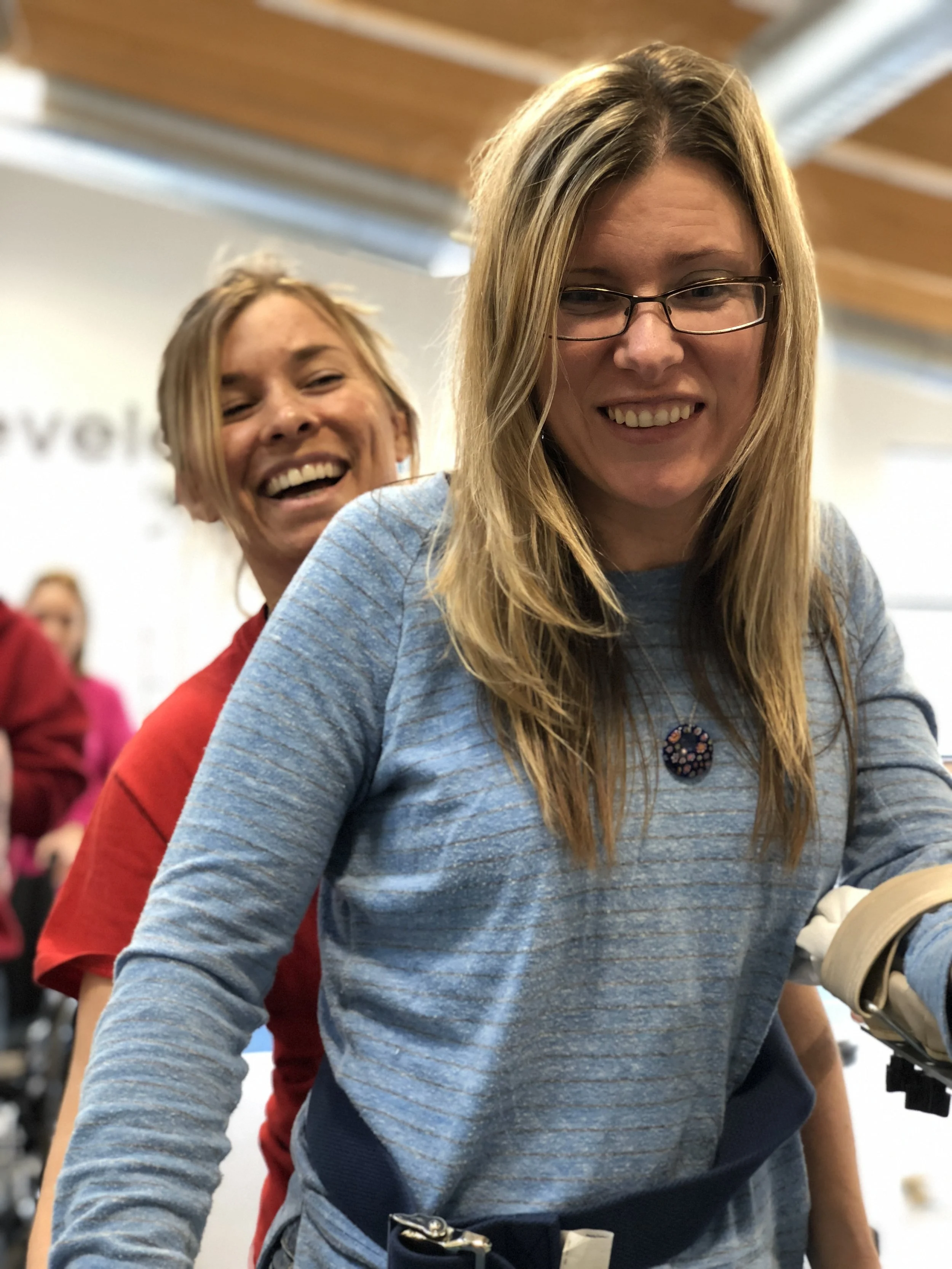Enriched Therapeutic Environments: How an engaging environment can make physical therapy more effective and efficient
The following article was written by Brian F. Sheridan, OTRL, creator of Level Eleven and Dixie Lodge Living & Wellness. It was published in Wellspect Magazine and later online at Wellspect online. For more information on Engaged Environments, contact us at info@level11pt.com.
“Enriched environments are meant to motivate and engage individuals to work hard and actually enjoy the experience. Science has shown that such motivation increases the potential for successful rehabilitation while potentially accelerating the rate of progress.”
“Physical therapy is pleasurable and fun!” said no one… ever. And why would they? Rooted in history’s most turbulent and tragic events, physical therapy has never been particularly glamorous. Beginning with the polio epidemic in 1916 and followed soon thereafter by the World Wars, physical rehabilitation was an ungracious profession used in environments that were hardly desirable. During these trying times, therapists were employed to “reconstruct” broken bodies of the sick or wounded, often using a literally hands-on approach which required tremendous creative ingenuity. In contrast to modern rehabilitation centers, the first therapists practiced in unsanitary hospital rooms, under pressing time constraints while lacking even the most basic therapeutic resources.
Over the course of the last century, physical therapy has evolved into a highly complex profession with multiple settings and specialties. Given the influx of rehab technology and the development of countless treatment approaches, today’s rehabilitation is unrecognizable compared to the practice performed by the first therapists a century ago. Yet despite the incredible progress, the therapeutic environment unfortunately remains stuck in time. Still deeply rooted in the hospital setting, physical therapy has garnered a reputation for being an arduous intervention, often tortuous, carried out in confined spaces with masochistic machines. Although the profession has made great strides in public health, it has not yet fully embraced the benefits of utilizing the environment of care as a unique and powerful intervention.
To better understand the importance of the environment as a clinical strategy, one should first acknowledge its critical role in human development. Children explore everything within their reach, whether that means climbing, feeling, smelling, or to the dismay of their parents, tasting. Countless days are spent on the playgrounds of schools and neighborhoods, swinging from the monkey bars, plunging down the slide, and blasting off like a rocket ship on the teeter-totter.
Additionally, children interact socially with other children and learn even more through their burgeoning social interactions. These formative years of a child’s life strengthen the capabilities of their central nervous system and create the foundation for physical and mental well-being. As human beings, we seek environments that are enriched with enjoyable activities in a pleasant atmosphere. This serves to stimulate and hone the senses, provides relief to stressful situations, and promotes a natural healing process that improves our overall health.
During the past twenty years, researchers have demonstrated the positive effects of enriched therapeutic environments, namely in the treatment of neurological conditions such as Autism, Alzheimer’s Disease, and Parkinson’s. Such therapeutic environments provide a constant variation of activities while engaging the senses from the moment you enter the room. Bright colors and stimulating music combine with an airy, open atmosphere, to create a stimulating environment. By the time you start your session, you might feel more like an athlete in training than a patient in treatment. Enriched environments are meant to motivate and engage individuals so that you want to work hard and you actually enjoy the experience. Science has shown that such motivation increases the potential for successful rehabilitation while potentially accelerating the rate of progress.
So how can physical therapy clinics begin to transform themselves into enriched centers of therapeutic excellence? I believe these environments can be created through the marriage of four essential components: Design, Innovation, Community, and Attitude.
Custom design and architecture created with architects and designers from Metro Detroit and Chicago.
Design
Design is perhaps the easiest way to convert a traditional clinical space into an engaging environment. Incorporating natural light and open floor plans into a clinic brings positive energy along with a sense of peace and well-being. Small, windowless clinical spaces are replaced with bright spaces constructed of natural materials like wood and stone. Additionally, the incorporation of specific colors and an array of sensory stimuli are welcome therapeutic interventions. For example, our therapy clinics in Michigancontain bright, lively colors in areas where we want to invigorate our patients, and softer, calmer colors in areas where we want to create a sense of peace. Similarly, patients are encouraged to bring their favorite music to therapy so that they can get that extra boost while gait training or to help them relax during stretching. Even the traditional therapist uniforms such as scrubs and khaki pants can become part of the therapeutic design by replacing them with athletic apparel more closely resembling that of a coach or trainer, prepared to help you attain the proverbial “gold medal” of your therapeutic endeavors.
Innovation
Winston Churchill once said, “Without tradition, art is a flock of sheep without a shepherd. Without innovation, it is a corpse.” I believe the same sentiment can be applied to physical medicine and rehabilitation. Tradition paves a path while innovation blazes new ones. In the clinical setting, innovation can mean many things. It can be through the implementation of engaging “activity-based therapies” as opposed to the more traditional pattern-based therapies. Additionally, innovative environments offer a variety of tasks for the patients to participate in, thereby keeping therapy new and interesting rather than dull and monotonous. Employing clinicians that are creative in the development of each patient’s treatment plan and constantly pushing the envelope of treatment, is another welcome innovation. By incorporating techniques from recent research and constantly exploring the latest in technology and equipment, therapy can become more efficient and enjoyable.
A.T.A.C. System, developed in collaboration with Michigan State University Engineering.
Regular outings and constant interaction with patients and their families have created a proud Level Eleven family.
Community
Engaged environments help patients to become more invested in the entire therapeutic process, by allowing them to choose aspects of their own therapy while simultaneously interacting with other patients. Such social interaction across patient populations creates a sense of “community” that is both motivating and inspiring. Patients with hip replacements can work alongside someone who sustained a spinal cord injury while they work next to someone with a traumatic brain injury. Instantly, everyone is encouraging one another in the therapeutic process while taking their own health less for granted. Within this therapeutic community, stories are shared, along with laughs and the occasional tears. Overall, every patient benefits from the renewed focus on an enriched environment.
Attitude
Unlike most therapeutic interventions, engaged environments do not have a specific protocol or formula. In fact, progresses in design, innovation, and community are moot without the adoption of a proper attitude. In order to achieve a truly enriched therapeutic atmosphere, each and every member of the staff – clinicians, techs, medical billers and managers - must understand the inherent benefits of such an environment. Further, they must be willing to fully participate and engage in maintaining a positive attitude every single day. In doing so, their actions all become part of the therapeutic process. They must understand that their attitude and non-verbal communication will have a direct effect on the mood of the environment. As noted above, with the right therapeutic environment, patients start to see rehabilitation less like work and more like fun. Similarly, when a clinical team truly believes in the power of engaging and enriched environments, their job turns from being a chore to a truly rewarding experience.
In its 100+ year history, physical therapy has grown to become one of the most important services in health care. Although it may not always be an appealing modality, it remains an efficient, non-invasive, and effective remedy to hundreds of diseases and disorders. Health care providers should continue to strive to provide a patient experience that promotes an individual’s desire to get better and become healthier. In doing so, modern clinics need to recognize the inherent values of creating therapeutic settings with a variety of activities and exercises that are geared to maximize patient outcomes. These enriched clinical environments are designed to help individuals progress faster and motivate their therapeutic success. If more clinics begin to adopt such environments, not only will we see accelerated progress and successful outcomes, we might also begin to hear our patients say, “I had fun at physical therapy today.”




